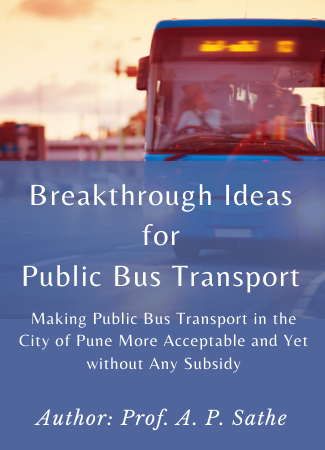
Breakthrough Ideas for Public Bus Transport
Pune Mahanagar Parivahan Mahamandal Limited (PMPML) runs the public bus transport system in Pune, India. Through this e-book, the author intends to provide a creative and sustainable transportation model for PMPML to provide good service to passengers using little to no subsidy and persuade them to use public transport rather than to depend on individual means of transport like scooters, motorbikes, auto-rickshaws, and cabs. The key unfamiliar ideas which make this possible are (i) Bus Hopping, i.e., the journey is in several buses in succession instead of a single bus. This helps to reduce waiting time for passengers without adverse impact on occupancy. (ii) Using the point-to-point operation of buses (that is, without halting at intermediate stops). This improves the economy. Besides, boarding a bus at the starting point is easier for the passengers than doing so at an intermediate stop where the halting time is very brief.